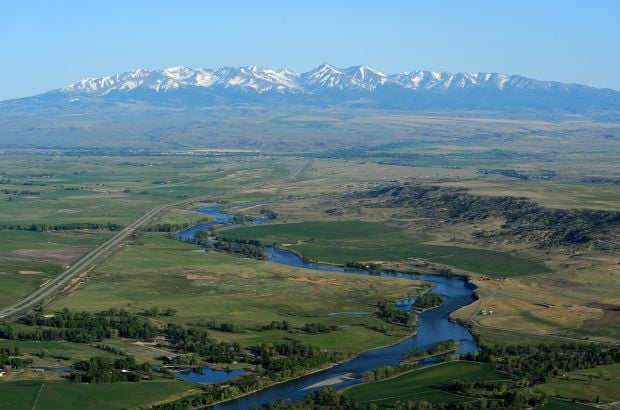GAZETTE OPINION
Gazette opinion: Montana’s Crazy land controversy

LARRY MAYER/Gazette Staff
The
Crazy Mountains soar out of the prairie, suggesting peace and
tranquility in this oasis of forest and streams. The idyllic landscape
belies longstanding friction over public access to National Forest
interspersed with private land.
The
latest round centers on the removal of District Ranger Alex Sienkiewicz
from field work in the Crazies to an office job pending an internal
investigation. That action came in response to pressure from U.S. Sen.
Steve Daines and Secretary of Agriculture Sonny Perdue. The senator and
secretary reacted to complaints about Sienkiewicz from ranchers and
outfitters.
Montana
hunters and public access advocates have stepped up to defend
Sienkiewicz, saying he was following long-established Forest Service
policy.
The
simmering controversy heated up last fall when Bozeman hunter Rob
Gregoire was cited by a Sweet Grass County deputy sheriff for
trespassing on a trail that he and Sienkiewicz believe to be open to the
public by “prescriptive easement,” because it has historically been
used by the public to access otherwise inaccessible public land.
Landowners
Lee and Barbara Langhus disagree and made the trespass complaint. There
is no written easement allowing public access across their land,
although the trail has long been marked on Forest Service maps and cited
in the Gallatin Forest Travel Plan.
The
Crazy Mountains contain more than 8,000 acres of National Forest that
the public has no way of accessing. That forest land is surrounded by
private holdings. The Crazies also contain a hunting district, much of
which is inaccessible to the public, with 2,000 elk — twice the
district’s maximum target as determined by Montana Fish Wildlife and
Parks.
That’s the
hunting district that Gregoire was trying to reach. The oversupply of
elk feast on some neighbors’ hay supplies, while others profit from
exclusive, limited hunts.
Land
ownership in the Crazies is a checkerboard pattern of public and
private sections that dates to the 1860s when the U.S. government gave
Northern Pacific Railroad 17 million acres of the Montana Territory up
to 80 miles from the rail line. More frequent confrontations are
cropping up on land that has recently changed ownership with new owners
who want their private property off-limits to the public. In other
cases, long-time owners may have a beef with Forest Service personnel or
bad experiences with the public.
Solutions won’t be easy,
but resolution efforts need to start now. There’s only one remaining
public access to the entire 35-mile-long eastern flank of the Crazies.
From
facts reported previously in The Gazette, it appears that Sienkiewicz
is being penalized for doing his job. Government employees deserve to
know that their supervisors — even the secretary of the department
— will stand up for them when they are serving the public.
However,
the Forest Service and local landowners have some fence mending to do.
Custer Gallatin Forest Supervisor Mary Erickson should have authority to
devise better ways to build trust between local landowners and Forest
Service personnel in the field. The local forest working group should
actively engage citizens with differing perspectives.
In
the long run, landowners, hunters, hikers and other public land users
need clarification on access issues. Possible remedies include:
- Montana legislative action to provide public access while protecting private property rights.
- Litigation that would result in a Montana Supreme Court ruling.
- Land swaps to consolidate key public and private holdings.
It’s
not realistic to believe that everyone interested in the Crazies will
just sit down and start getting along. But we urge the Forest Service to
start a conversation with landowners and the general public.
Daines
and Perdue must stop micromanaging staff in the Gallatin Forest. Daines
should listen to all his constituents, relay their concerns and then
let land management professionals do their jobs.
Perdue
should see that decision making about forest land is led by department
professionals in Montana — not from his Washington, D.C., office.
